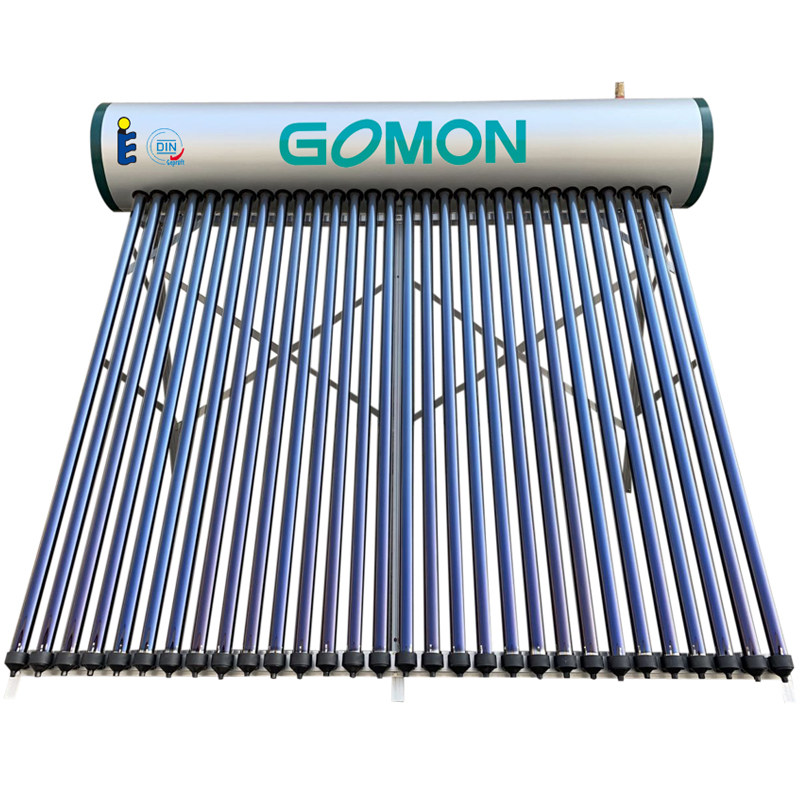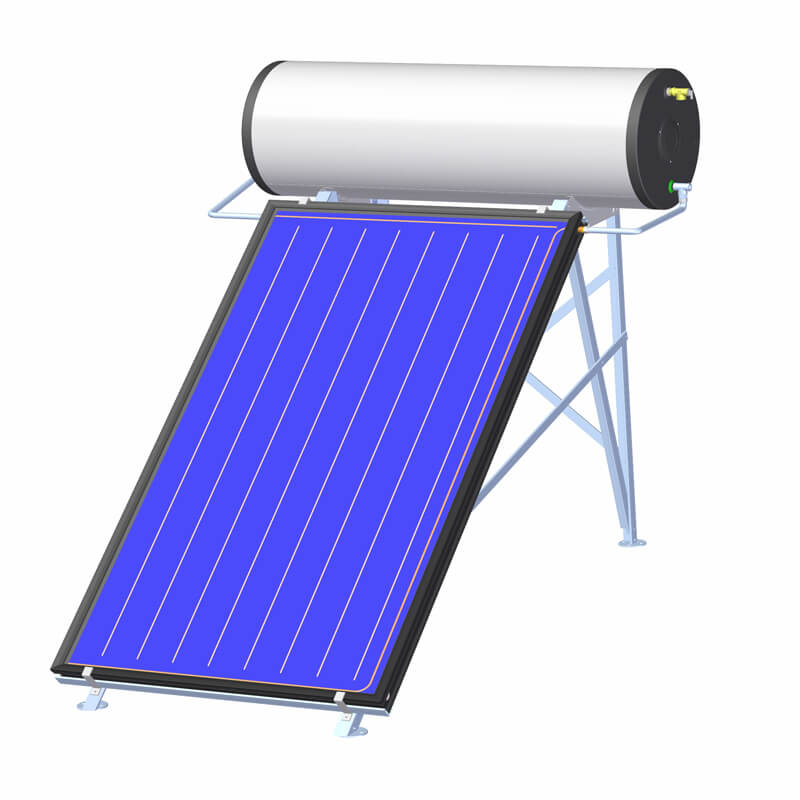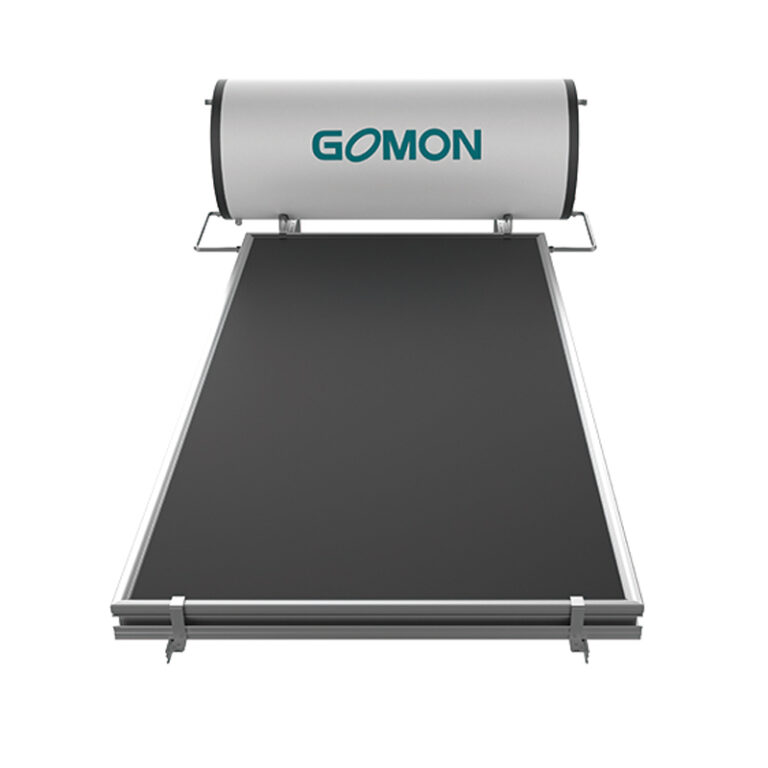Solar Water Heater is the conversion of sunlight into heat for water heating using a solar thermal collector. A variety of configurations is available at varying cost to provide solutions in different climates and latitudes. Solar Water Heaters are widely used for residential and some industrial applications.
Installing a solar water heater is one popular method for homeowners to reduce their electric bill. These systems use renewable energy to reduce the need for grid power while delivering high volumes of hot water.
What is a solar water heater?
Unlike traditional water heaters, solar water heaters don’t use energy from the grid to heat water. Instead, these high-efficiency appliances use dedicated solar collectors on your rooftop to draw power from the sun. The solar energy collected is then used to heat the water in your home.
Solar water heaters have been extremely popular in the past because they cut down your electric bill and allow you to heat up your water with clean energy. The solar collectors directly heat your water, and do not provide any other solar energy to your home.
More recently, people have been opting for electric heat pump water heaters, which are coupled with home solar panel systems. Electric heat pumps use grid energy to heat your water, however, when paired with a home solar system, they are able to still run on solar electricity.
If you aren’t able to install a full home solar system, or if you have an off-grid home, a standalone solar water heater can be a great option.
How do solar water heaters work?
Solar water heating systems can produce enough hot water to fulfill most of your daily domestic hot water needs.
There are two main types of solar water heaters available for residential and commercial use:
- Active solar water heaters
- Passive solar water heaters
Each of these works differently and consists of different equipment.
Active solar water heaters
Active solar water heaters use a pump to circulate hot water from the solar collectors, or absorbers, to your home. These are usually installed in areas with colder climates, as the water gets stored in a tank that can be kept indoors to prevent freezing.
There are two different types of active solar water heaters:
- Active direct systems, where the water is heated directly in collectors, and is then sent to your faucet and showerheads. The solar collectors are usually metal or glass tubes.
- Active indirect systems, in which a heat transfer fluid, like propylene glycol, is heated up within the solar collectors, and then transfers the heat to the water supply with a heat exchanger in a closed-loop system. Some heat loss occurs while the transfer fluid circulates the system.
Passive solar water heaters
Passive solar water heaters do not use circulating pumps to move hot water. Instead, they rely on convection as the circulation system, where hotter water rises to the surface and cold water sinks, in order to circulate water.
Passive solar water systems are usually cheaper than active ones, as they don’t require special equipment to pump the water.
There are two main types of passive solar water heaters:
- Integral collector solar water heaters are large, black water storage tanks that are built into an isolated box with a top that lets sunlight through. The sunlight heats the water directly in the black tanks, which then flows into your plumbing system when you need hot water.
- Passive thermosyphon systems use metal flat plate collectors to heat small batches of water on your roof. When you open your hot water valves, hot water in the top of the batch collector flows down from your roof to your faucets. These usually are designed to contain 40 gallons of water.
Many passive systems include a tankless heater as a backup energy source, which can either be gas or electric.
Storage Tanks And Solar Collectors
Most solar water heaters require a well-insulated storage tank. Solar storage tanks have an additional outlet and inlet connected to and from the collector. In two-tank systems, the solar water heater preheats water before it enters the conventional water heater. In one-tank systems, the back-up heater is combined with the solar storage in one tank.
Three types of solar collectors are used for residential applications:
Flat-plate collector
Glazed flat-plate collectors are insulated, weatherproofed boxes that contain a dark absorber plate under one or more glass or plastic (polymer) covers. Unglazed flat-plate collectors — typically used for solar pool heating — have a dark absorber plate, made of metal or polymer, without a cover or enclosure.
Integral collector-storage systems
Also known as ICS or batch systems, they feature one or more black tanks or tubes in an insulated, glazed box. Cold water first passes through the solar collector, which preheats the water. The water then continues on to the conventional backup water heater, providing a reliable source of hot water. They should be installed only in mild-freeze climates because the outdoor pipes could freeze in severe, cold weather.
Evacuated-tube solar collectors
They feature parallel rows of transparent glass tubes. Each tube contains a glass outer tube and metal absorber tube attached to a fin. The fin’s coating absorbs solar energy but inhibits radiative heat loss. These collectors are used more frequently for U.S. commercial applications.
Solar water heating systems almost always require a backup system for cloudy days and times of increased demand. Conventional storage water heaters usually provide backup and may already be part of the solar system package. A backup system may also be part of the solar collector, such as rooftop tanks with thermosyphon systems. Since an integral-collector storage system already stores hot water in addition to collecting solar heat, it may be packaged with a tankless or demand-type water heater for backup.
Buying Guide
When choosing a solar water heating system for your home, there are several that you must consider.
Capacity of the System
The system you pick should meet your needs. For instance, if you regularly require 500 gallons of water a day, make sure that the system you choose can fulfill these demands and more.
Ease of Use
When choosing a system, give it a once-over to ensure that it is easy to set up, use, and maintain. Doing so will help you avoid problems after making the purchase.
Durability
Since solar powered heaters are installed outside, they need to be durable and made of quality materials. Thus, choose a product that gives you the best value for your money while being equipped to withstand the vagaries of nature.




